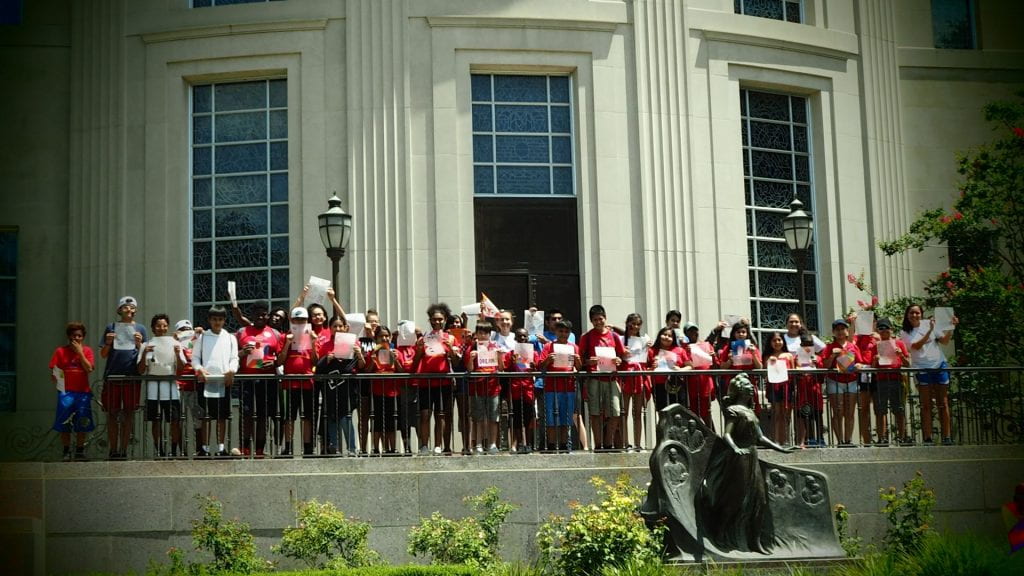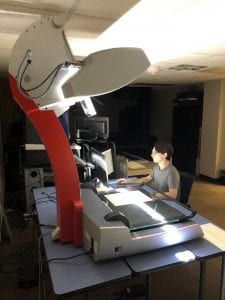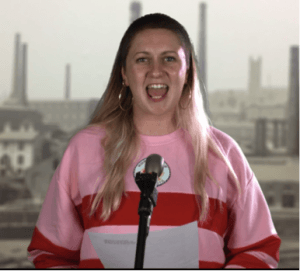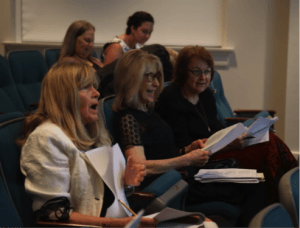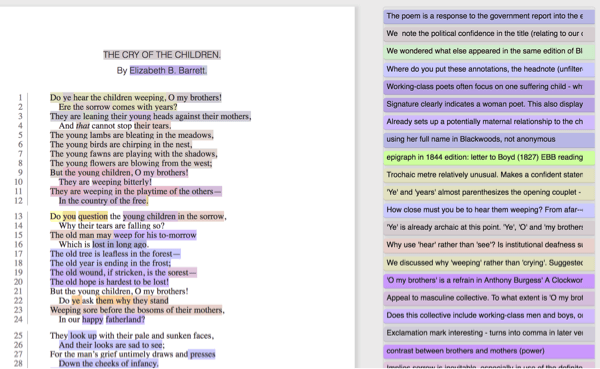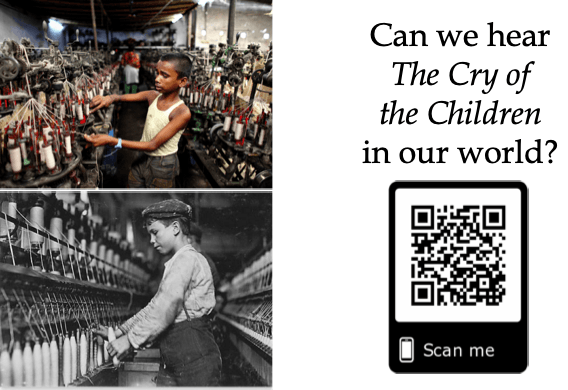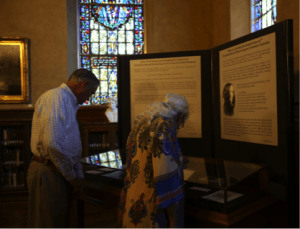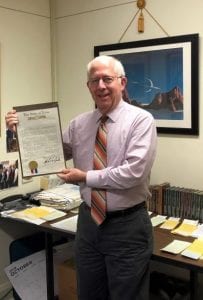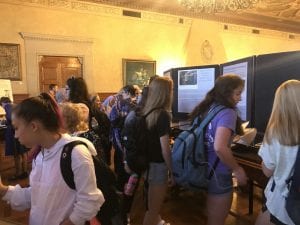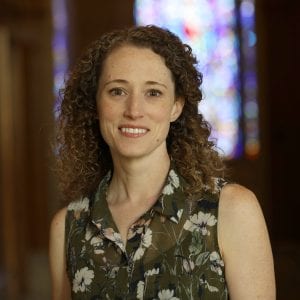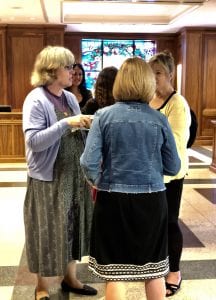We had a great day last Friday (July 12, 2019) at the Armstrong Browning Library!
Nearly 40 middle grades scholars from the Transformation Zone at Indian Springs Middle School who are currently enrolled in the Baylor Freedom Schools Program visited the library for a tour. The Baylor Freedom Schools Program is a free literacy enrichment program. It utilizes interactive curriculum along with field trips and special guests to provide meaningful learning for enrolled students.
The Armstrong Browning Library was honored to host the scholars for one of their fieldtrips. The visit began with an introduction to the library and its history in the Martin Entrance Foyer by ABL Curator Laura French. The scholars then divided into four groups and toured the rest of the building with guidance from French, ABL Director Jennifer Borderud, Rare Books Catalog Librarian Amy Runyon, and ABL Library Host Kacie Collin.
- Freedom School Scholars in the Martin Entrance Foyer, July 12, 2019
- Freedom School Scholars in the John Leddy-Jones Research Hall, July 12, 2019
- Freedom School Scholars in the Hankamer Treasure Room, July 12, 2019
- Freedom School Scholars in the McLean Foyer of Meditation, July 12, 2019
- Freedom School Scholars in the Austin Moore-Elizabeth Barrett Browning Salon, July 12
The tour emphasized the life and works of Robert Browning and Elizabeth Barrett Browning. The artifacts and artwork on display formed the basis for discussions on the lives of the Brownings. The tour also provided the scholars an opportunity to get a close look at the library’s collection of stained-glass windows, many of which illustrate the poetry of Robert and Elizabeth Barrett Browning.
The tour ended in the Cox Reception Hall where scholars created their own stained-glass window designs based on a selected poem. Scholars chose to draw what was literally happening in the poems they chose or to use shapes and colors to create an abstract expression of what their poem was about. Scholars selected from poems by the Brownings, Christina Rossetti, Emily Dickinson, and Walt Whitman, as well as by Langston Hughes, Robert Frost, William Carlos Williams, Gwendolyn Brooks, Gary Soto, Sandra Cisneros, and Juan Felipe Herrera.
- Freedom School Scholars illustrating a poem, July 12, 2019
- Freedom School Scholars in the Cox Reception Hall, July 12, 2019
- Freedom School Scholars illustrating a poem, July 12, 2019
- Freedom School Scholars in the Cox Reception Hall, July 12, 2019
- Freedom School Scholars illustrating a poem, July 12, 2019
- Freedom School Scholars in the Cox Reception Hall, July 12, 2019
- Freedom School Scholars illustrating a poem, July 12, 2019
The ABL would like to thank Dr. Lakia Scott, Yasmin Laird, and Alexis Hooker for bringing their scholars to the ABL and providing us the opportunity to share Robert and Elizabeth Barrett Browning with the Baylor Freedom School scholars.
Thank you also to Amanda Gardner for the photographs used in this post.

